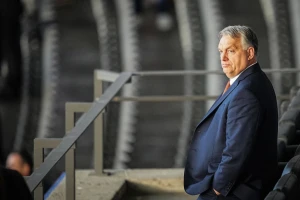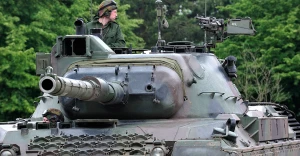
What is forcing Russia to buy back Soviet weapons, equipment worldwide
Russian special representatives are trying to negotiate with Sudan to buy back Soviet equipment, including tanks. Is Russia really running out of weapons?
Oleksandr Kovalenko, Ukrainian military and political observer of the Information Resistance group, writes about this in the Obozrevatel special project.
Recent reports have surfaced indicating that Russian special envoys are engaging in negotiations with Sudan to repurchase Soviet-era equipment, including tanks. Sudan, embroiled in civil strife since 2023, possesses a significant inventory of T-54/55 and T-72 tanks, along with their Chinese and Iranian variants. While this development might seem routine, it raises eyebrows given Moscow's intensified global efforts to reclaim Soviet-era armaments. Is Russia really running out of weapons?
As early as 2022, Russia initiated efforts to procure ammunition and equipment for its military, anticipating a prolonged engagement in the war against Ukraine, contrary to initial estimations of a resolution in 2-3 days. However, it was in 2023 that these endeavors gained momentum, particularly as the aggressor country sought to acquire old Soviet and Russian weaponry and equipment dispersed over the preceding three decades across Asia, Africa, and even Latin America.
“The information about current attempts of Russians to acquire weapons in Sudan contradicts the propaganda reports of the Russian media, which claim that the country's military-industrial complex is operating at unprecedented levels and production volumes are increasing daily. If these claims were true, it seems unlikely that Russia would be seeking old Soviet equipment to purchase around the world,” the article states.
Roughly 90% of the equipment dispatched by the Russian military-industrial complex to the Ukrainian combat zone isn't newly manufactured but rather refurbished old Soviet equipment sourced from warehouses and storage facilities. As the full-scale war in Ukraine enters its third year, Russia's inventory of Soviet-era equipment has notably diminished. With the rapid pace of both destruction and simultaneous restoration, the depletion of stockpiles has intensified.
Tanks
The main Russian companies engaged in tank production and restoration include:
- Uralvagonzavod: Specializing in the restoration and modernization of T-72 tanks, as well as small-scale production of T-90s.
- Omsktransmash: Focused on the restoration and modernization of T-80 tanks.
- 103 APC Repair Plant: Specializes in the restoration and modernization of T-62 tanks.
- 61 APC Repair Plant: Engaged in the restoration and modernization of T-72 and T-80 tanks.
- 163 APC Repair Plant: Specializes in the restoration and modernization of T-72 tanks.
Prior to the full-scale invasion of Ukraine in 2022, Russia supplied the army with 300 to 400 tanks per year, which were not newly manufactured but repaired, modernized, and restored.
Presently, the Russian military-industrial complex averages 350-400 tanks per month in terms of restoration, modernization, production, and repair. Of these, only a company of T-90 tanks is allocated to Russian forces, with the remainder being other categories. Approximately 100 tanks are repaired after sustaining damage, primarily at repair centers.
As of early 2024, Russia's warehouses and storage centers held the following tanks:
- T-90A and T90C: Up to 100 tanks.
- T-72: About 1,500 tanks of varying repairability.
- T-80: Approximately 800 units of varying repairability.
- T-62: Up to 600 units.
- T-54/55: Up to 600 tanks of varying repairability.
In total, there are 3,600 tanks in relatively repairable condition in storage.
Considering the current intensity of hostilities and the ongoing loss dynamics of armored vehicles by Russian forces, Russia possesses about a year's worth of repairable tank stocks. However, it's crucial to note the varying degrees of suitability for repair, as only vehicles deemed capable of swift restoration have been withdrawn from storage since 2022. Equipment requiring more time and resources for repair remains in warehouses and storage centers.
AFV/APC
Russia is both restoring armored fighting vehicles from stockpiles and producing them in full. The main enterprises involved in these processes are:
- Kurgan Machine-Building Plant;
- Volgograd Tractor Plant;
- Arzamas Machine-Building Plant.
In addition, a number of enterprises are modernizing products that are no longer in production. For example, the Rubtsov Machine-Building Plant is upgrading the IFV-1 to the IFV-1AM Basurmanin modification with the installation of a combat module from the APC-82A, a radio station of the R-168 type, and a software and hardware complex for internal communications equipment.
Prior to the full-scale invasion of Ukraine, the Russian military-industrial complex supplied a total of 350-450 units of new, restored, repaired, and modernized products to the troops every year. However, from 2020 to 2021, a record number of APCs were transferred - more than 700, of which at least 300 were decommissioned and modernized IFVs-2.
Artillery
The Russian military-industrial complex is primarily focused on restoring artillery systems from Soviet-era stockpiles, accounting for over 90% of efforts. The production of new artillery systems constitutes only a small fraction of those supplied to the combat zone.
Presently, Soviet-era artillery stocks in Russia, categorized as "commissioned" and "in storage," approximate as follows:
- D-20 (152-mm): Approximately 100 in commission, with around 1,000 in storage.
- D-30 (122-mm): Roughly 450 in commission, with about 4,000 in storage.
- Msta-B (152 mm): About 450 in commission, with around 550 in storage.
- Giatsint-B (152 mm): Approximately 100 in commission, with roughly 1,000 in storage.
- Gvozdika 2S1 (122-mm): Around 400 in commission, with approximately 1,200 in storage.
- Acacia 2S3 (152 mm): About 700 in commission, with around 800 in storage.
- Giatsint 2S5 (152-mm) self-propelled gun: Approximately 150 in commission, with about 500 in storage.
- MSTA-S 2S19 (152-mm): Roughly 400 in commission, with about 150 in storage.
- Pion 2S7 (203-mm) self-propelled gun: About 100 in commission, with roughly 100 in storage.
- Nona-S 2S9 (120-mm) self-propelled gun: Around 300 in commission, with approximately 500 in storage.
- Nona-SVK 2S23 (120-mm) self-propelled gun: About 30 in commission, with none in storage.
- Tyulpan 2S4 (240-mm) self-propelled gun: Approximately 30 in commission, with around 150 in storage.
This list excludes 120-mm mortars like 2B11, 82-mm BM-37, 100-mm MT-12 Rapira anti-tank gun, 85-mm D-44 divisional gun, among others. The storage category indicates the quantity tentatively suitable for restoration, capable of being brought to a combat-ready state.
In essence, Russia currently maintains a comparable number of guns in storage to those destroyed since 2022. However, there's been a decline in the quality of the artillery being restored, despite the quantity being sustained.
Oleksandr Kovalenko believes there is a reason why Russia has been busy lately looking for countries willing to sell it Soviet-era equipment. There is a clear depletion of Soviet-era stocks in warehouses and storage centers, as well as a deterioration in the quality of what remains.
“In the third year of the full-scale war, Russia's potential, which some experts called infinite, has been exhausted. This is well understood in the high offices of the Kremlin, which is why they are trying to convince the world of the opposite by all possible means - to impose the idea that the Russian army is capable of fighting for a long time if it is not brought to the table for peace talks. Of course, on its own terms,” military and political observer writes.
Kovalenko concludes that Russia needs peace talks more than ever, because in a year's time, there will be categories of equipment that it will not be able to fight with the current intensity, and it will start losing them in the red, even without the possibility of compensating for losses to zero.
- News













































